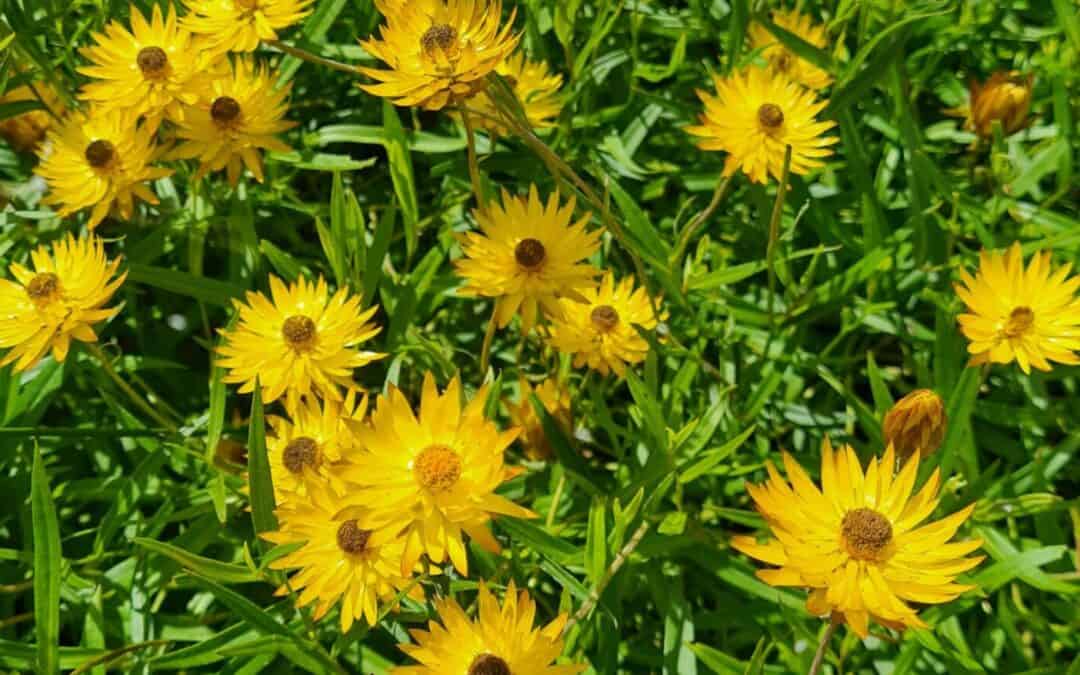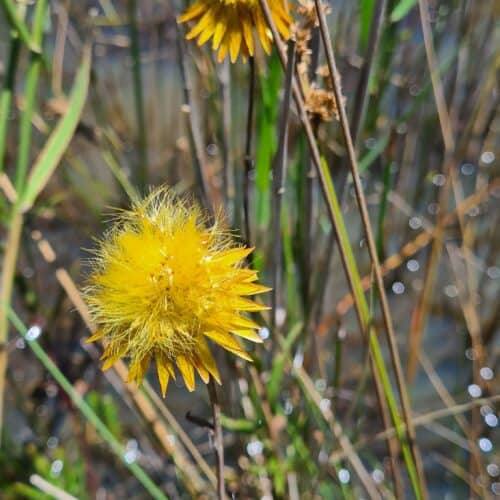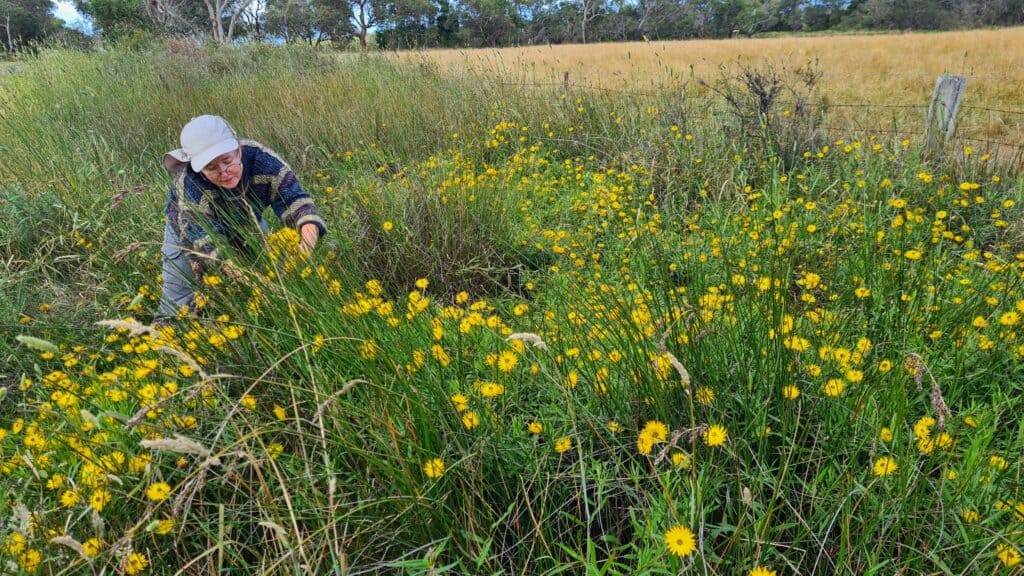Xerochrysum palustre (The Swamp Everlasting)
This beautiful golden everlasting daisy is endemic to south-eastern Australia (https://vicflora.rbg.vic.gov.au/flora/taxon/xerochrysum_palustre). It grows in seasonal or permanent wetlands and swamps scattered from near Portland in western Victoria to Bairnsdale in the east, also occurring in NSW and Tasmania. It is perennial, grows 30-100 cm tall and has showy flowers up to 5 cm across which appear from November to March. It dies off in late summer, and resprouts in winter-spring, depending on rain. The Swamp Everlasting is listed as Critically Endangered under Victoria’s Flora and Fauna Guarantee Act 1988, and as Vulnerable under the Commonwealth Environment Protection and Biodiversity Conservation Act 1999 reflecting a range of threats to the long-term persistence of populations, including land clearing, altered hydrology, weed invasion and grazing.

- Flower seeding – Supplied RBGV
The National Recovery Plan for Xerochrysum palustre (2011) estimated that there were 35 wild populations remaining. With the passage of time and following a recent revision of the genus (see Collins et al. 2022. Australian Systematic Botany 35, 120-185) which reclassified some alpine populations as a new species, Xerochrysum andrewiae, the current number and extent of populations of X. palustre is unclear. It is also difficult to estimate the number of plants and health of populations because of its rhizomatous growth form. As part of the ‘Preventing the extinction of Victoria’s threatened flora’ project, RBGV staff are conducting surveys across its range and collecting material for genetic analysis to characterise diversity in remnant populations. Seeds are also being collected which will be used to grow plants to bolster populations, and act as insurance collections for long-term storage in the Victorian Conservation Seedbank at RBGV, Melbourne.

- RBGV volunteer assisting with seed collection – Supplied RBGV
This research is funded by DEECA Victoria’s Nature Fund. The ‘Preventing the extinction of Victoria’s threatened flora’ project is led by Royal Botanic Gardens Victoria in partnership with La Trobe University, Australian Network for Plant Conservation, DEECA, Trust for Nature, ENVITE, Bairnsdale & District Field Naturalists Club, Friends of the Grampians Gariwerd, Wimmera CMA, Nillumbik Shire, Halls Gap Botanic Gardens and the Australasian Native Orchid Society Victorian Branch.
Feature image: Xerochrysum palustre (supplied RBGV)



